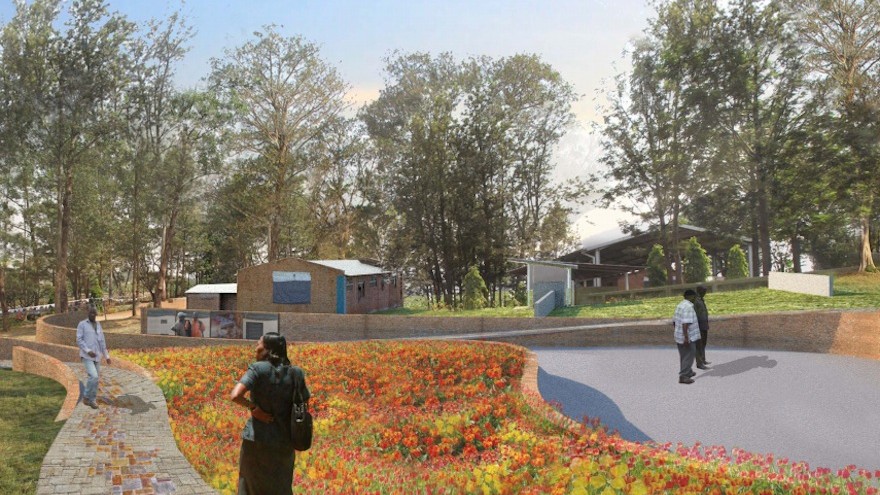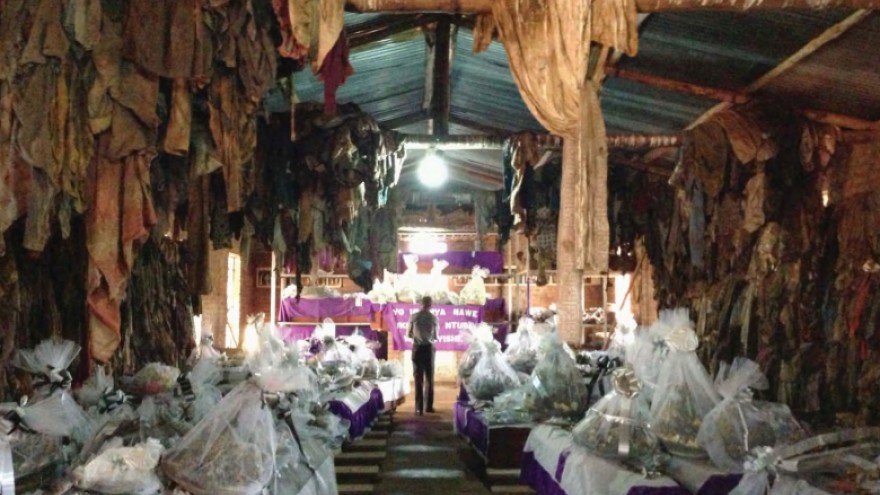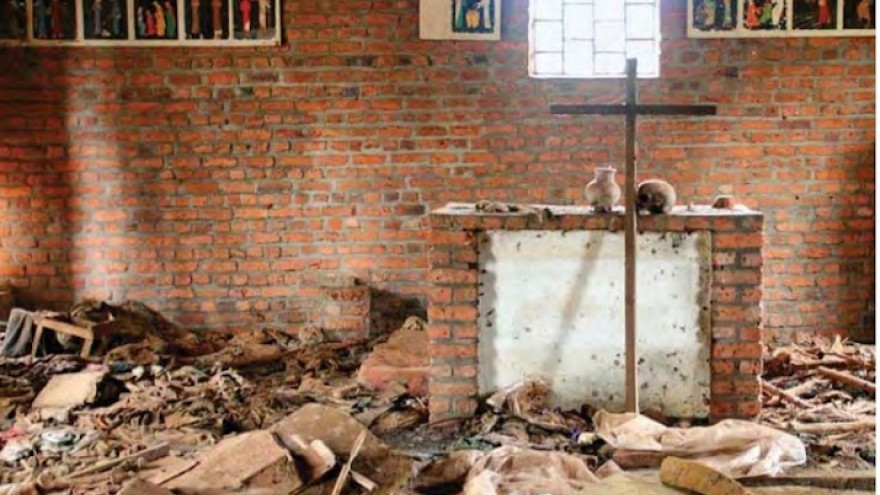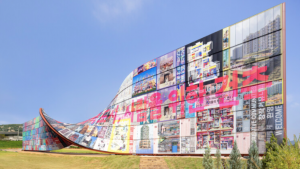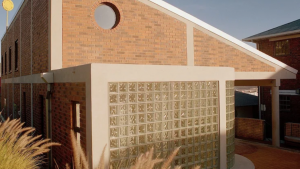Sitting on a hill just 30 kilometers from Rwanda’s capital city, Kigali, Ntarama Church looks unassuming. But upon entering the church, it is clear that the building holds far more significance than the building conveys.
In April 1994, 5 000 people were murdered in the pews of Ntarama Church by genocidal Interhamwe militias. Tutsi villagers from the surrounding towns took refuge in the church, expecting to be safe in a house of God. With them, they brought provisions to survive: mattresses, bags of food, cooking pots, clothing. Just a few days later, all but a few were killed.
For many years, the church was left exactly as it was on the day of the massacre. Bodies, reduced after years of decay to skeletons, lay piled between the pews, clothing and personal belongings scattered among the bones.
Today, the human remains have been stacked and put on display, clothes have been picked up and hung from rafters, and personal belongings gathered into piles, in an effort to formalise the memorial site.
As the church building itself began to decay, individuals both local and foreign sought to properly preserve Ntarama, to keep the memory of what took place there alive. Most especially, the old bricks the church is constructed out of were beginning to deteriorate.
Brought on partly because of its previous community-based construction projects in Rwanda, socially minded and US-based architecture firm Sharon Davis Design has taken the project beyond the original brief of preservation. Along with Aegis Trust and Rwanda’s National Commission for the Fight Against Genocide, they have finalised plans that will help Rwandans and foreigners alike commemorate the 1994 genocide.
Sharon Davis, founder of the self-titled firm, and Bruce Engel, the firm’s Rwanda-based architect, took on the challenging task of formalising the church site into a place where survivors, families of victims, school children, surrounding communities and foreign visitors could learn about, mourn, reflect, and pay respects to those who lost their lives at Ntarama.
After raising funding and finalising designs, construction of the new memorial centre is set to begin this month.
The firm designed a multi-purpose welcome centre to precede entrance into the church. To ensure that the modest church building remains the most important structure on the site, it came up with a simple and subdued yet modern design for the building. The church itself will undergo preservation work with help from a US-based team.
“We don’t want to disrupt the feeling and the rawness of it,” says Engel, “but it’s in need of attention in order to prevent it from falling down.”
Davis explained that the idea for a welcome centre on the site came from her own experience of visiting the church for the first time.
I felt unprepared to be in the space, and in some ways that felt disrespectful, Davis said.
“So we started talking about creating some kind of experience before entering church.”
From the centre, those wishing to hear the story of Ntarama and of the surrounding Bugesera region during the genocide can pick up headphones for a guided audio tour. Families of victims or others who know the story and are visiting the site to pay respects have the option to take a second, quieter path that skips that church and the guided tour and leads straight to a reflection point by mass graves, where the human remains inside the church will soon be buried.
In creating the design itself, Davis and Engel visited memorials across Rwanda and the world, including a number of Holocaust memorials in Germany. They also engaged the surviving family members and surrounding communities for their input. There are several other memorials similar to Ntarama, where bodies were simply left in the place they fell. In most instances, the local communities, lacking the funding to construct formal memorials, chose instead to leave the site as it was found, to serve as a reminder and tribute to the dead.
But given the opportunity to do more, Davis and Engel found that the first priority of local communities was the proper burial of their deceased loved ones. They are now working with genocide survivors on how to mark the site of the mass graves in a respectful and culturally appropriate manner.
Davis knows that the construction and preservation of a physical memorial will help tell the story of the Rwandan genocide. “You’re in that space, and space can have power. That’s what we know as spatial people, that space can have an impact.”
She hopes that the center, once completed, will have the power to cultivate peace. That it will be a space where survivors can feel comfortable to tell their stories and grieve their lost ones, and where younger generations can listen, so that such a tragedy can be prevented from happening again.
Although the design plans are in place and human remains soon to be laid to rest, Davis feels this centre will have wide repercussions in the future. “We are starting something, not ending it, starting something that will hopefully carry on for the next 50 years.”

